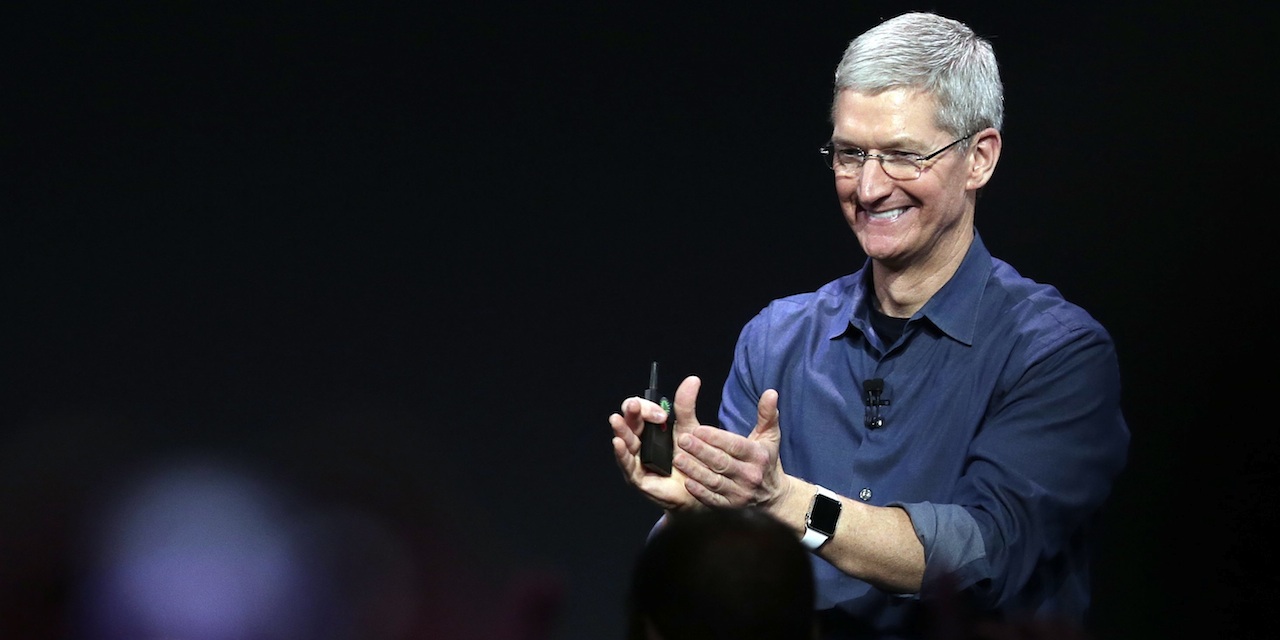Apple today announced “the biggest advancement in the history of the iPhone,” a larger 5.5″ model dubbed the iPhone 6 Plus, with a slimmer design and the usual bevy of new features. But the biggest chance isn’t the form factor, it’s the functionality—Apple’s newest device is a digital wallet.
The world’s most profitable company has moved from a cult-like following of die-hard fans to the top of the consumer electronics market. But Apple has come under pressure from naysayers who believe the company will flounder without a steady stream of category-creating new devices and investors unhappy with its humongous cash pile.
The buzz around the newest iteration of the iPhone has focused primarily on the size of the device, with the much-anticipated larger model designed to compete with Samsung’s ever-growing phone stable. Apple has to this point resisted the growing phablet trend, but as with the launch of the iPad Mini, the company could not hold ignore consumers’ desire for a particular size of device any longer.
However, the announcement that the iPhone 6 will include near-field communications (NFC) capability and a system called Apple Pay hints at a more long-term gamble: mobile payments. Consumers’ internet use increasingly takes place on hand-held devices, making the closed garden of iOS a sleeping monetization opportunity for Apple. Internet rival Amazon recently launched its own smartphone offering in a bid to become users’ default shopping location.
Apple has a long record of building category-busting products that draw on the company’s own innovative offerings that failed to catch on. The iPad, a device that arguably launched the tablet market, built on the lessons of the failed Newton personal assistant family of devices, and presaged many of the present-day features of the mobile iOS platform. Apple Pay, which allows users to make payments by pressing down on the TouchID key, similarly build on existing Apple ideas, combining two existing functionalities into a location-sensitive virtual wallet.
Apple Store employees use a system called EasyPay to process payments and issue receipts. The application allows blue-clad “Specialists” to scan barcodes and accept credit cards, and the company recently began replacing the souped-up iPod Touches that run EasyPay with the iPhone 5s. The move ostensibly adds some functionality, including chip/pin card reading capability and RFID, but it could herald a broader rollout of scanning technology in mobile devices.
EasyPay is location based—it also allows ordinary customers visiting a physical retail location to purchase certain accessories using the credit card associated with their Apple ID to make purchases, but the system hasn’t received much attention or use. Expanding that functionality to other retailers would remove the pain point of walking up to a checkout counter, enabling shoppers to pay by simply taking a picture of a product’s bar code. Apple is reportedly in talks with retailers like Target and Nordstrom over NFC-enabled shopping.
The iPhone already has a mobile wallet of sorts, called Passbook, which allows users to store digital copies of boarding passes, event tickets and coupons. Passbook interacts with an ecosystem of proprietary apps from companies like Indigo, Eventbrite, WestJet and Starbucks, but doesn’t itself hold money. An updated Passbook is among the improvements included on the iPhone 6.
Digital wallets are hardly new—we’ve been talking about the shift to a virtual payment economy since the beginning of the smartphone era, and traditional commerce operations like credit card leader MasterCard and banks like CIBC have been expanding their mobile payment options. But the model for Apple could be arch-rival Google, which launched a digital wallet that combines the tickets-and-loyalty-cards storage of Passbook with credit or debit card information for real-world purchases.
These moves don’t mean that these tech companies are entering the financial business; even e-commerce processing leader PayPal requires users to have some kind of bank account or credit access. Rather, they are attempts to keep consumers within companies’ digital ecosystems, allowing users to access products and services from other retailers and providers but through Apple’s or Google’s or Amazon’s platforms.
Apple has shown an eerie ability to enter digital markets at exactly the right moment. Amidst all the hype about a larger iPhone and the possibility of an iWatch, the company’s latest product may signal a less obvious consumption shift: the era of the mobile wallet is finally, finally here.
This story originally appeared in Canadian Business











